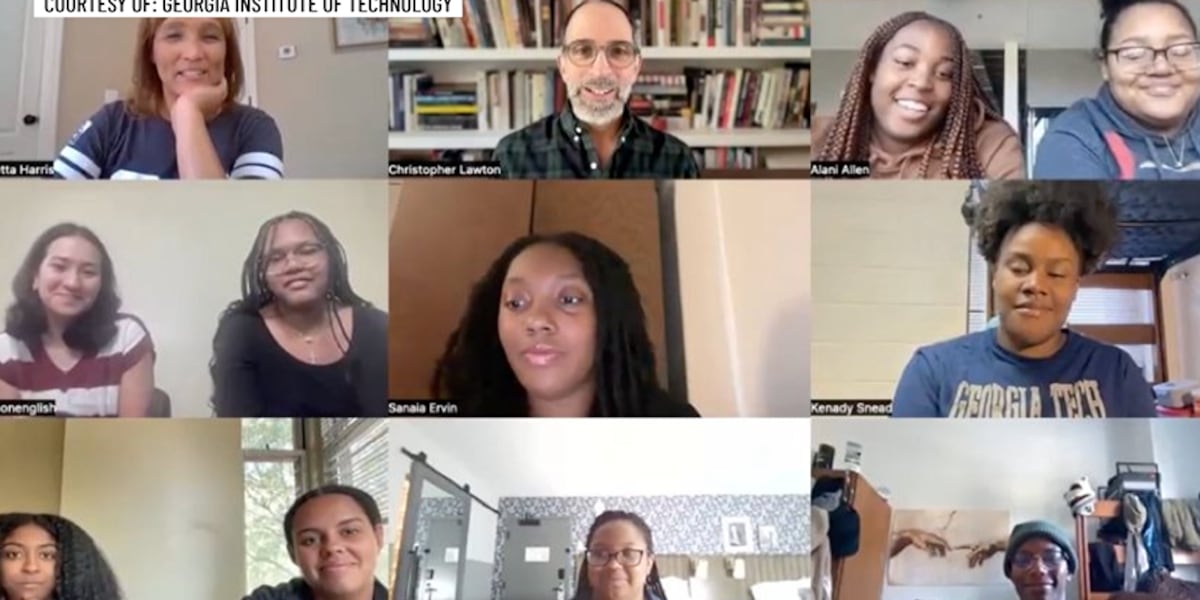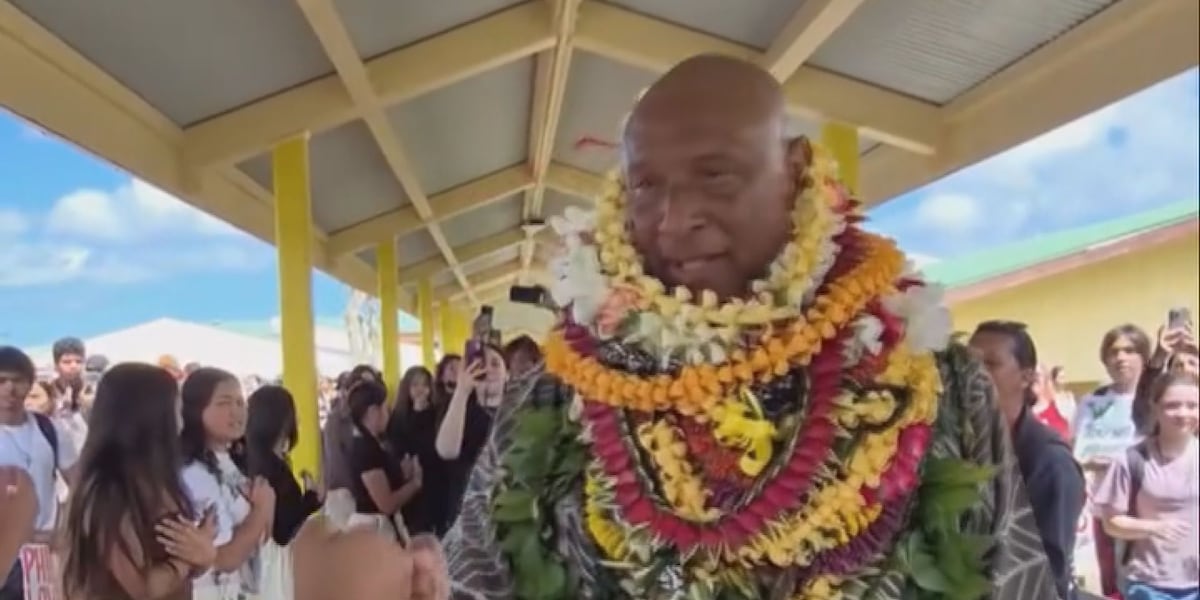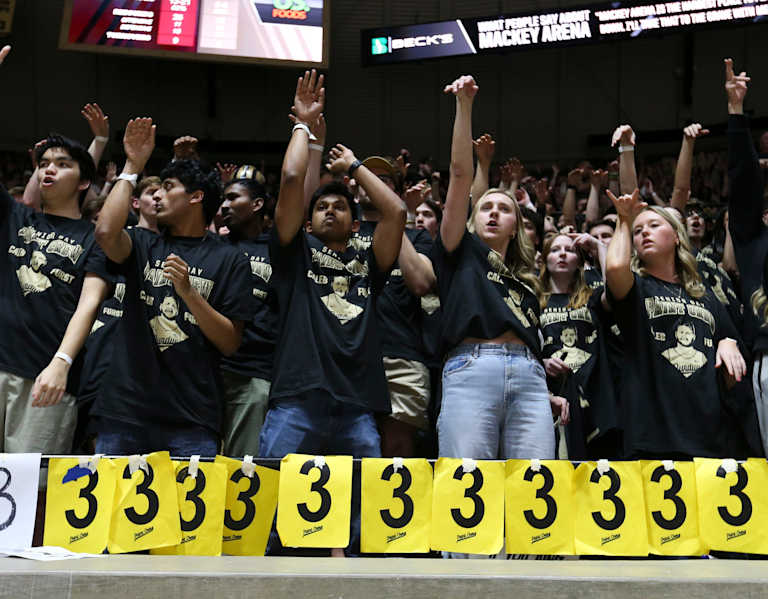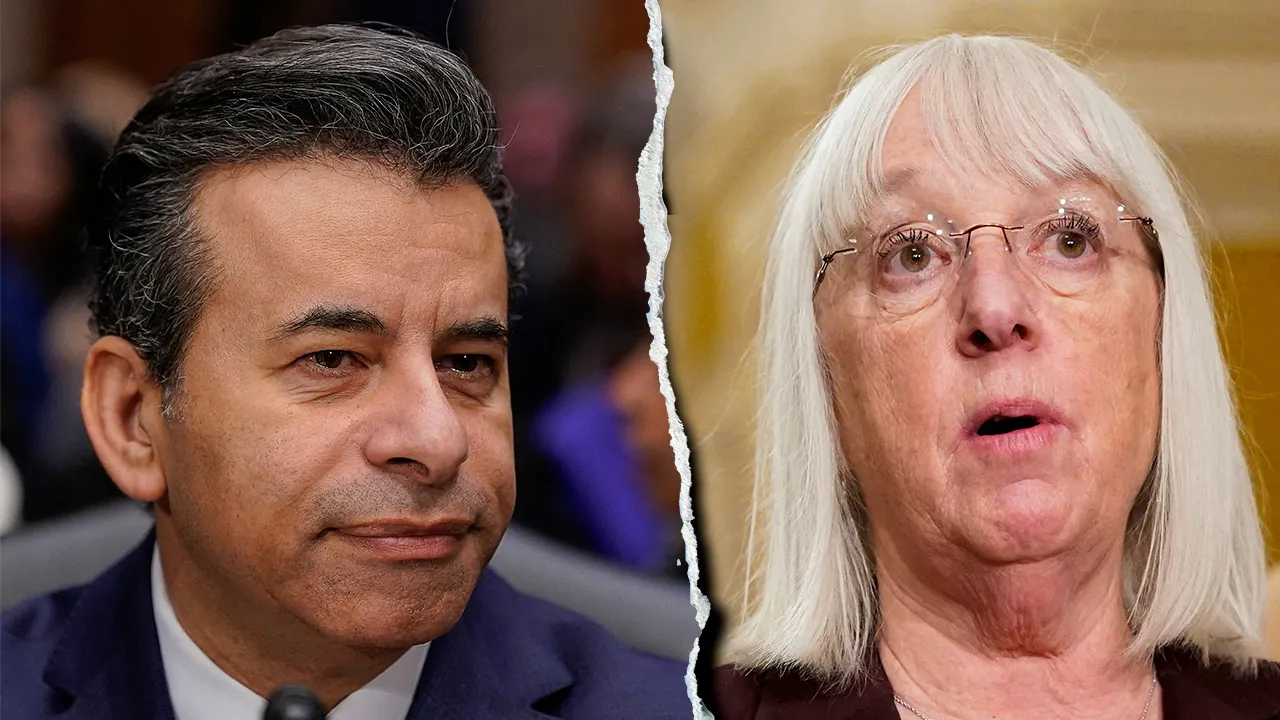A large-scale undercover operation caught 11 smoke shops selling flavored vapes and other illegal tobacco products, the San Francisco city attorney’s office said Wednesday.
San Francisco, CA
SF’s Dean Preston Faces Criticism Over Affordable Housing in Hayes Valley | KQED
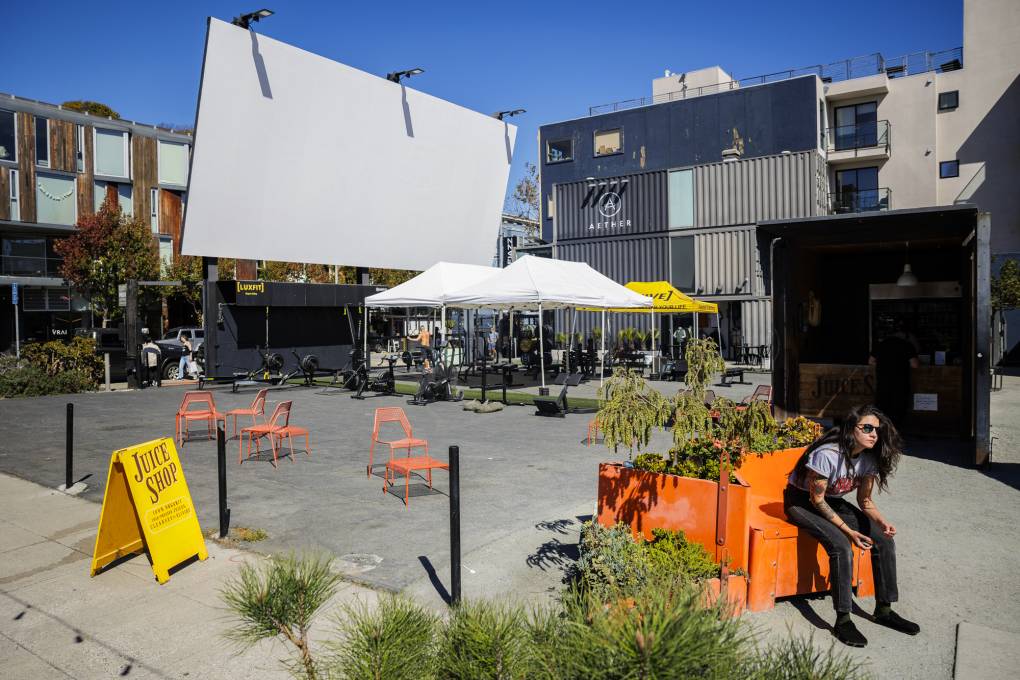
Netzband and Nelson, along with dozens of others, were in the park to watch Songs of Earth, a 2023 documentary set in Norway, on the big outdoor screen. It was the first of five Friday movie nights scheduled for the 9th annual Fall Film Festival at PROXY, an outdoor space at Octavia Boulevard and Hayes Street that features local businesses, Sunday concerts and free events like the film festival.
The space opened about 15 years ago as a placeholder for an affordable housing project.
Housing is a top concern for many San Francisco voters, and the candidates for mayor and the board of supervisors have rolled out plans to tackle the housing crisis. San Francisco, the slowest city in California to approve new housing, is under pressure to build 82,000 housing units by 2031.
In July, Gov. Gavin Newsom issued an executive order directing state officials to dismantle tent encampments. On Thursday, San Francisco Mayor London Breed announced that the number of tents on the city’s streets is at the lowest point since before counting began in 2018.
In District 5, which includes the Tenderloin, Japantown, Western Addition, Haight Ashbury and Hayes Valley, incumbent Supervisor Dean Preston’s housing record has been criticized by pro-development groups and his challengers. PROXY, officially known as Parcel K, has been a part of Hayes Valley for as long as many residents like Netzband have lived in the neighborhood.
Preston has made developing Parcel K a priority since he took office in 2019, dividing residents who have fallen in love with the space.
“When you promise affordable housing on a site as part of land-use planning, you damn well better deliver it,” Preston said at a rally in support of Parcel K development last month.
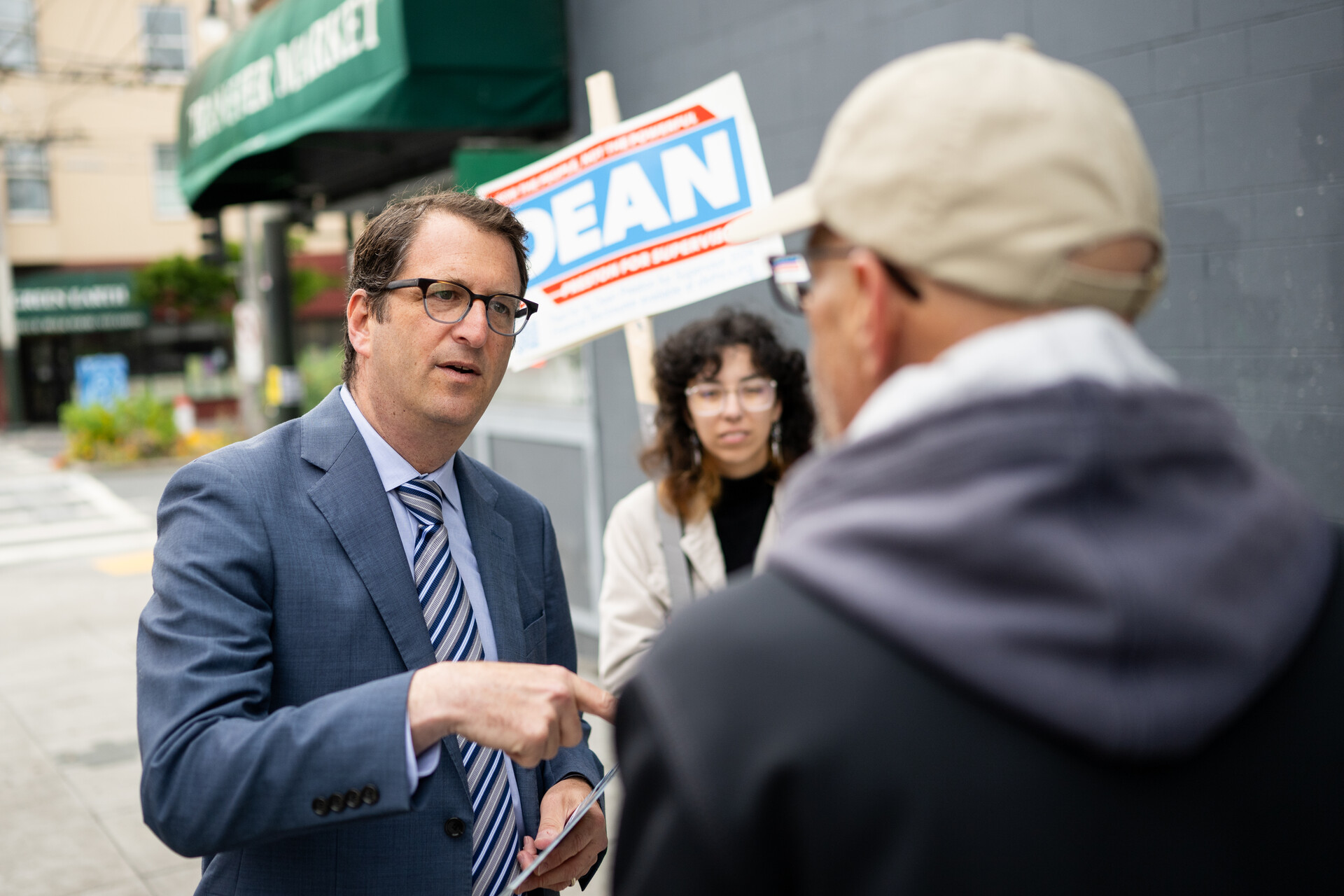
After voters approved a proposition to replace the central freeway west of Market Street with Octavia Boulevard in 1999, the surrounding land was parceled off for different uses. The city planted about 400 feet of grass and trees and put in concrete tables to create Patricia’s Green, named for Patrica Walkup, one of the activists who inspired the roadway teardown. Parcel K was earmarked for low-income housing.
Preston and Board President Aaron Peskin said that an affordable housing proposal for the space would gain the approval of the supervisors. If a developer did get the rights to build, they wouldn’t have to pay for the land. Thanks to a nearby market-rate development deal, Preston said a builder would get $1 million for the project. Still, 21 years since being designated for housing, there isn’t one rendering of what the apartment complex might look like.
Preston blames Mayor London Breed, who was endorsed by SF YIMBY, the city’s pro-development movement, in July. Before anything can happen, Breed has to issue a request for qualifications to invite bids from developers, which Preston said the Mayor’s Office of Housing and Community Development agreed to do last year but hasn’t.
“It was determined that we would not prioritize Parcel K for development in the immediate term and instead focus on advancing projects that are more competitive for State funding and located in priority equity neighborhoods,” a spokesperson for the Mayor’s Office of Housing and Community Development said in an email.
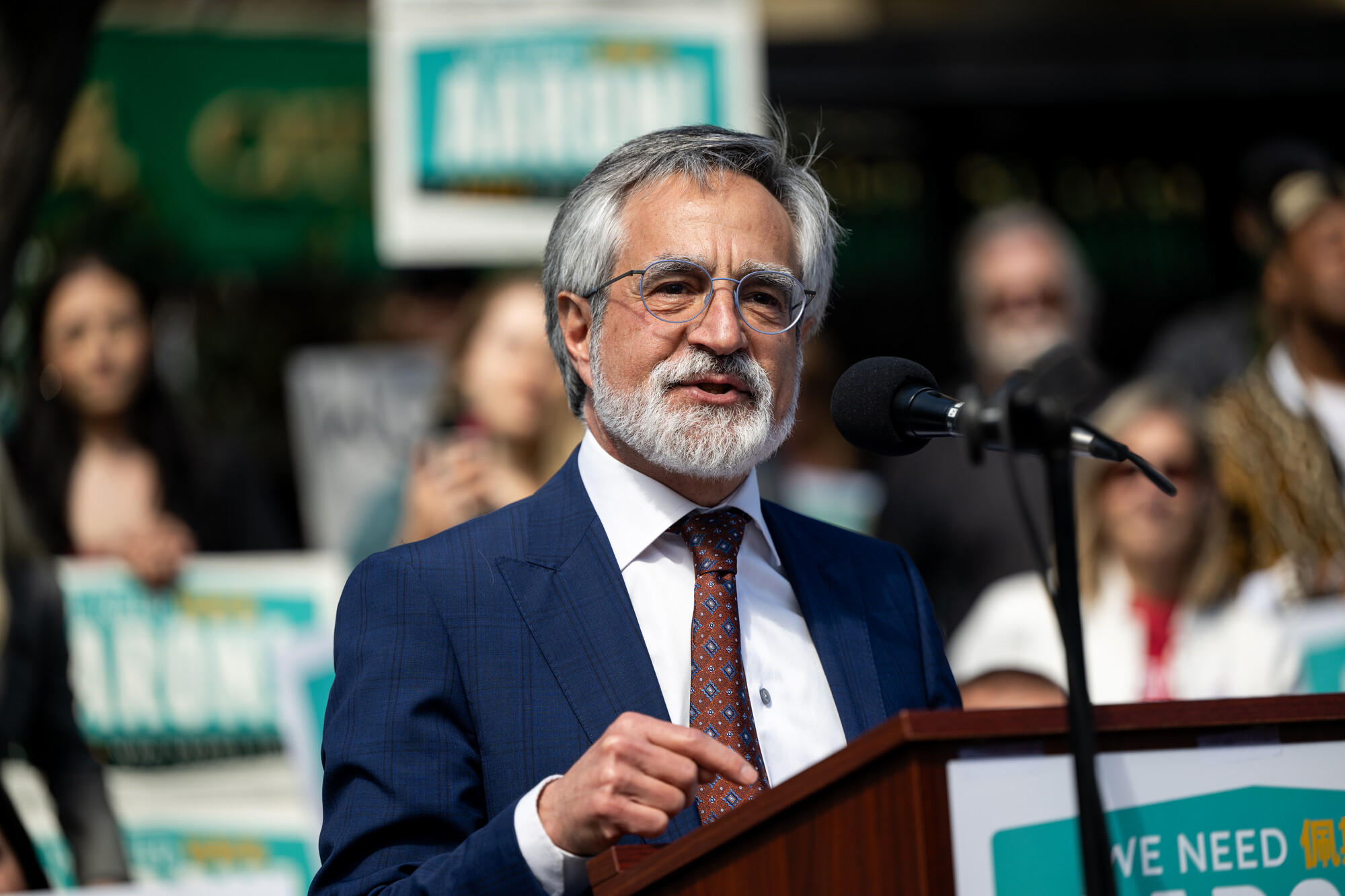
The spokesperson said that PROXY saves the city roughly half a million dollars a year in holding costs and contributes to the neighborhood. The debate over what to do with Parcel K is just one of many policy tug-of-war between YIMBY groups and progressives in the fight to solve the housing crisis. Preston and Peskin have been quick to point out the hypocrisy of those who label them NIMBYs.
“You would think the YIMBYs would be here,” said Peskin, who is running to replace Breed, after last month’s rally at Patricia’s Green in support of Parcel K.
About 30 people attended the rally, including members of the advocacy group Hayes Valley for All and affordable housing advocates, to celebrate the delivery of a petition signed by 1,600 people asking Breed to issue the RFQ immediately.
In 2021, SF YIMBY volunteers published Dean Preston’s Housing Graveyard, a website chronicling more than 30,000 homes the group claims he’s opposed. GrowSF, a moderate advocacy group trying to oust Preston in November, put up a billboard near a shuttered Touchless Car Wash in the Haight that it said should be affordable homes. In June, a housing advocate filed a lawsuit over Preston’s depiction of his housing record on his reelection paperwork.
Preston’s main rival, Bilal Mahmood, who GrowSF and SF YIMBY endorse, has campaigned on meeting the 2031 requirement.

“We are not going to meet those housing goals if we follow the pattern that [Preston] does, which is pick fights in the community against single parcels and not be developing simultaneously and trying to get things done in as many spaces as possible,” said Mahmood, who has secured endorsements from Breed and San Francisco’s Democratic Party.
Besides Preston, he is the only other candidate in the race who signed Hayes Valley for All’s petition — reluctantly, according to organizers. He said District 5’s supervisor should be focused on building on other sites, like the car wash at 400 Divisadero St.
“Dean wants to continue to make this a specific personal campaign issue because he’s failed to build housing,” he told KQED. “He’s also failed to build housing in other empty lots and other parcels and we need to be building housing in as many places as possible.
Some of the units Preston is accused of opposing by SF YIMBY are projects requiring developers to increase the percentage of affordable units to gain his vote, including at 400 Divisadero St. and another potential development at 650 Divisadero St.
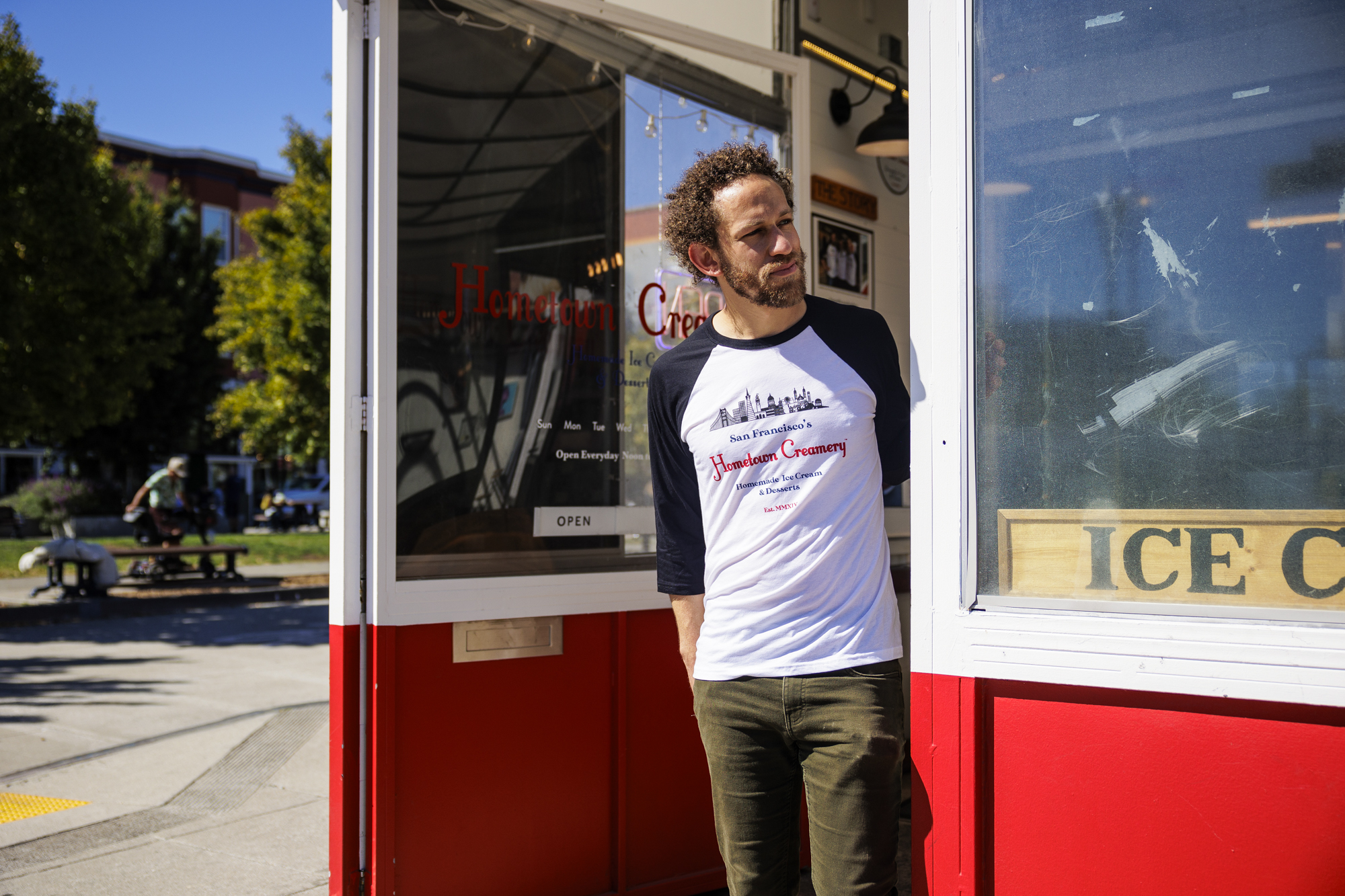
Preston said that in 2022, there was a developer in contract to acquire the graffitied, fenced-off car wash lot for a fully affordable project. He blames Breed for failing to acquire the land. Now, a market-rate project with 200 units is proposed for the site. Only 23 are expected to be affordable.
“We’ve been supporting housing at all levels, but when we say that, we mean that includes housing the market won’t build, which is housing that low-income and working-class people can live in,” Preston, who Speaker Emerita Nancy Pelosi endorsed in July, said.
But he’s also opposed projects before because of the way they could impact neighborhood character. Before he was supervisor, Preston was a leader of Affordable Divis, which advocated for affordable development on the street that would “contribute to the architectural character of the neighborhood.”
“This is the hub of this neighborhood,” Netzband said of PROXY, adding that the neighborhood wouldn’t utilize Patricia’s Green the same way if a tall apartment building was built on Parcel K.
He’s lived in San Francisco for 30 years and said Hayes Valley’s sense of community has kept him in the neighborhood for half of that time. Netzband said he’d vote for Preston but feels that his push to develop Parcel K is out of touch with the community.
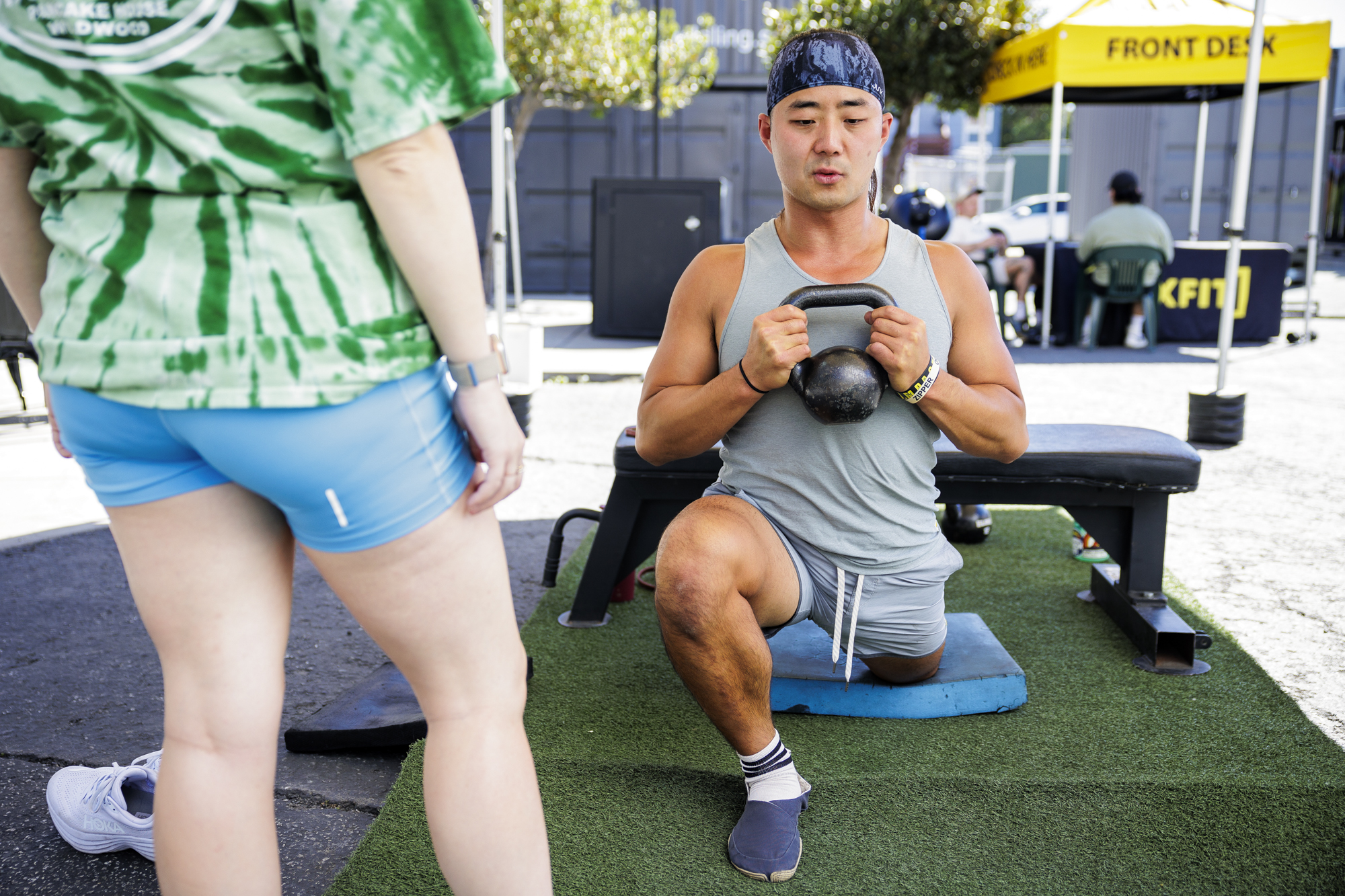
“Over the past 15 years, [Hayes Valley] has grown tremendously,” Netzband told KQED. “New housing has brought thousands of people into this neighborhood, and this park is way too small for a neighborhood that’s as dense as this.
“I’m all for public housing, but this needs to stay the hub of the community because this community will suffer if we don’t keep it.”
Preston told KQED that Parcel K development would include ground-floor retail, like most of the buildings in the Hayes Street commercial corridor. It could accommodate about 100 units and be around eight stories, compared to surrounding three- and four-story buildings.
Jen Laska, the former president of the Hayes Valley Neighborhood Association, said a tall building would swallow Patricia’s Green.
“I think that would affect the draw to Hayes Valley, generally,” Laska, who was GrowSF’s head of operations in 2022 after leaving the neighborhood association, said. During her tenure, GrowSF coalesced with SF YIMBY to sponsor Proposition D, a 2022 ballot measure to streamline the city approvals needed to build housing. The organization said proposals are often denied by an “anti-housing Board of Supervisors.”

San Francisco, CA
Strava opens new HQ at 181 Fremont St., formerly built for Meta
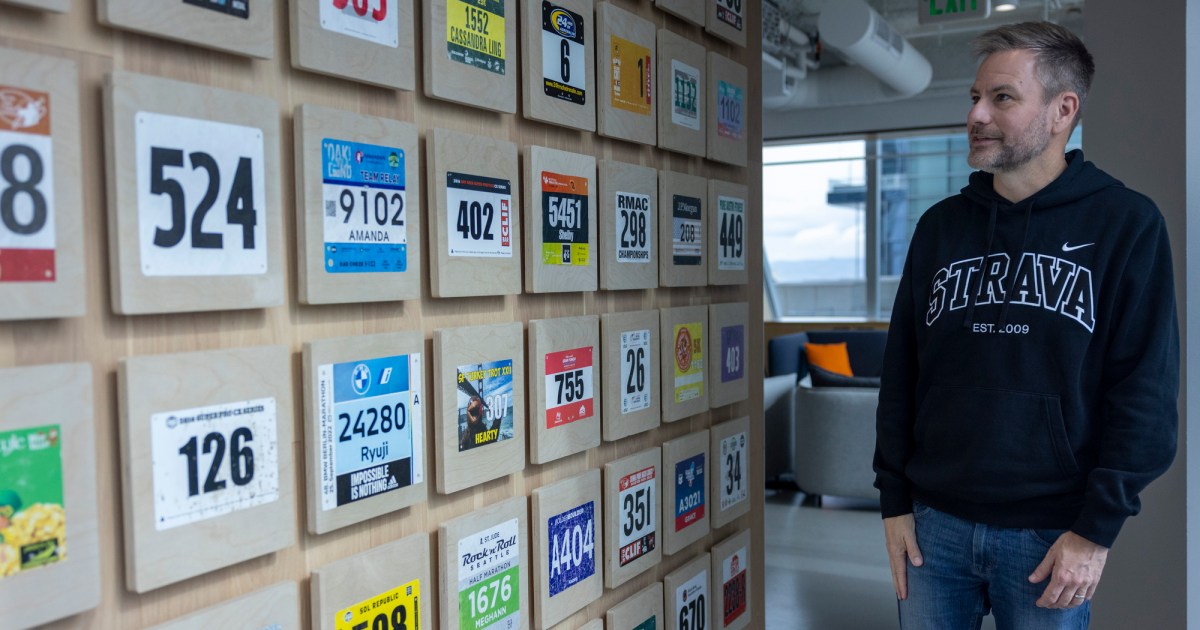
The company’s chief people officer, Michele Bousquet, said the search for a new headquarters started in earnest last spring. After touring more than 20 properties, she said, the company narrowed down the list to five but circled back to 181 Fremont because of its location, safety, and access to amenities like Salesforce Park, which is connected to the building.
“We knew we were going to get good value,” Bousquet said, adding that after three months of touring, Strava was able to quickly negotiate a sublease deal with Meta and move in four months later.
Since 2019, the company’s headcount has grown from 175 to 430, she said. Strava employees are still allowed to work from home but are asked to come in at least two or three days a week. Lunch is catered on Tuesdays and Wednesdays, and the employees have organized a weekly team workout since moving into the building.
San Francisco, CA
San Francisco residents attend Ash Wednesday, pray for Pope Francis

Ash Wednesday marked the beginning of Lent, a period of reflection for Catholics worldwide. While many gathered today to receive ashes, a symbol of faith, worshippers in North Beach also lifted up special prayers for Pope Francis, as he remains hospitalized for respiratory complications.
At St. Peter and St. Paul Catholic Church, Father Lam administered ashes to parishioners, continuing a tradition that has persisted for centuries. The custom signifies repentance as the church prepares for its Easter fast.
“We are asking people to do some penance and do some good works, helping others, so we can all go together and prepare ourselves for Easter,” Father Lam said.
However, this year’s Ash Wednesday has a unique significance. The global Catholic community is especially focused on prayers for the pope, who has spent nearly three weeks in the hospital battling respiratory issues.
“We ask you to pray for his speedy recovery, so that he can resume his duty as the pastor of the whole world,” Father Lam added.
The pope’s illness comes amid concerns over a significant decline in church attendance. A recent 2024 report from the Hartford Archdiocese revealed an 18% drop in Catholic church attendance from 2019 to 2024. This decline has been attributed, in part, to an increasing number of Americans identifying with no religious affiliation.
Despite the trend, some church leaders are optimistic. Frank Lavin, a Eucharist minister, noted a positive shift in attendance at St. Peter and St. Paul.
“It was really great this morning to see so many people in church getting their ashes again. Because it used to be a really big deal to go to church on Ash Wednesday, get ashes, give something up for Lent. So, I feel like the tide is kind of changing,” Lavin said.
The decline in attendance is also linked to ongoing controversies, including the church’s decades-long sexual abuse scandal. Yet, Father Lam remains hopeful about the church’s future.
“When you look at the human face of the church, we find many faults and many defects and so on, but don’t forget that Jesus Christ is the real leader of the church. So we have to look at the church not only from the human point of view, but also from the divine perspective,” Father Lam said.
It is this divine perspective, he believes, that sustains his commitment to serving his community.
San Francisco, CA
Illegal vape hunt: SF launches Bay Area-wide undercover op
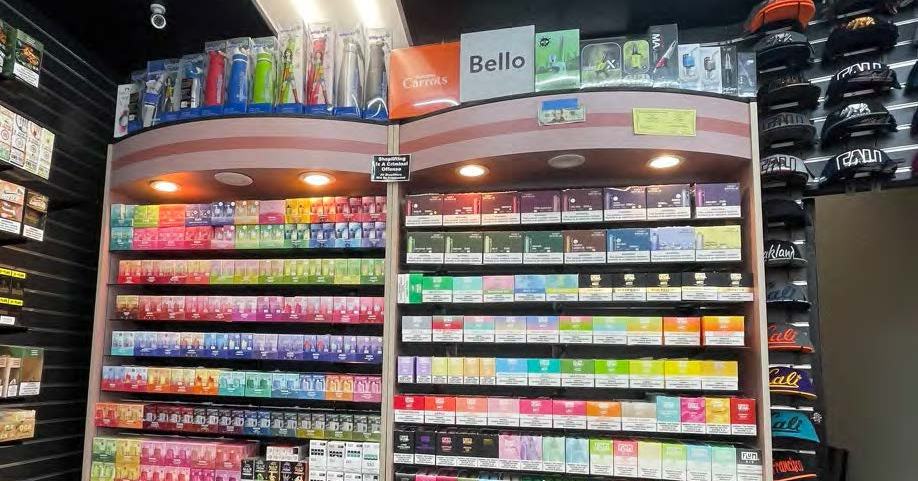
The investigation revealed that two owners were flouting laws restricting e-cigarettes and flavored tobacco products and operating without a permit after health inspectors found vapes and flavored pouches at a Mission Street smoke shop.
The Department of Public Health in March 2024 ordered the owners of Bass Gift Shop at 5196 Mission St. to stop selling tobacco and make the shop accessible to inspectors. The owners sold an illegal vape to a department decoy investigator in May and refused an inspection in June.
Exotic Vapes, 711 Kains Ave., San Bruno
Exotic Puff n Stuff, 484 San Mateo Ave., San Bruno
Grand Tobacco Shop, 338 Grand Ave., South San Francisco
Diamond Gift Shop, 6198 Mission St., Daly City
420 Glass and Gift Shop, 2502 Telegraph Ave., Oakland
Smoke and Gift Shop, 646 Hegenberger Rd, Oakland
Fast Fill Gas and Market, 449 Hegenberger Rd., Oakland
Cigarettes Cheaper!, 20930 Mission Blvd., Hayward
Smoke Shop, 6193 Santa Teresa Blvd., San Jose
Delauers Gift Shop, 1412 Park St., Alameda
A $250,000 judgment, approved Monday by San Francisco Superior Court Judge Barbara Zuniga, requires owners Basserty Alriashi and Muneer Al Osfur to surrender all illegal flavored tobacco products to state or local authorities.
An attorney for Alriashi and Al Osfur did not respond to requests for comment.
Under the settlement, the defendants must prominently display the California Department of Public Health’s fact sheet on the flavored tobacco law and allow inspections by state and local agencies.
Health officials noted that flavored e-cigarettes have threatened progress in reducing youth tobacco use. According to the Public Health Department, 7.9% of San Francisco high school students reported using e-cigarettes in 2021.
Sales of flavored tobacco products have been banned in San Francisco since 2018, when voters approved Proposition E in response to the rising popularity of vaping by youths.
In 2019, the Board of Supervisors unanimously passed a ban on the sales of most e-cigarettes over the protests of Juul Labs, which was then headquartered in San Francisco and a major producer of vapes. A company-sponsored ballot measure that would have reauthorized sales was defeated later that year.
In recent years, the city attorney’s office has also pursued online retailers of flavored products and branded nicotine pouches.
-

 Sports1 week ago
Sports1 week agoNHL trade board 7.0: The 4 Nations break is over, and things are about to get real
-

 News1 week ago
News1 week agoJustice Dept. Takes Broad View of Trump’s Jan. 6 Pardons
-

 World1 week ago
World1 week agoHamas says deal reached with Israel to release more than 600 Palestinians
-

 Science1 week ago
Science1 week agoKilling 166 million birds hasn’t helped poultry farmers stop H5N1. Is there a better way?
-

 News1 week ago
News1 week agoChristianity’s Decline in U.S. Appears to Have Halted, Major Study Shows
-
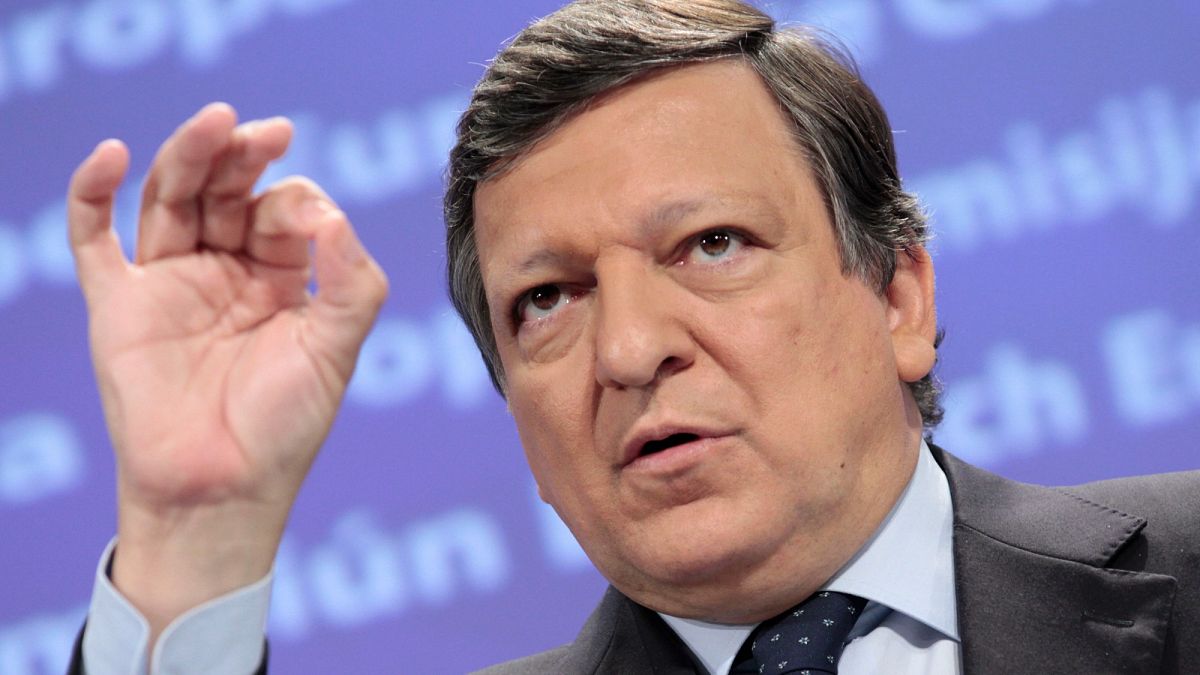
 World1 week ago
World1 week agoGermany's Merz ‘resolute and determined,' former EU chief Barroso says
-

 Technology1 week ago
Technology1 week agoMicrosoft makes Copilot Voice and Think Deeper free with unlimited use
-

 Politics1 week ago
Politics1 week agoSome Republicans Sharply Criticize Trump’s Embrace of Russia at the U.N.
